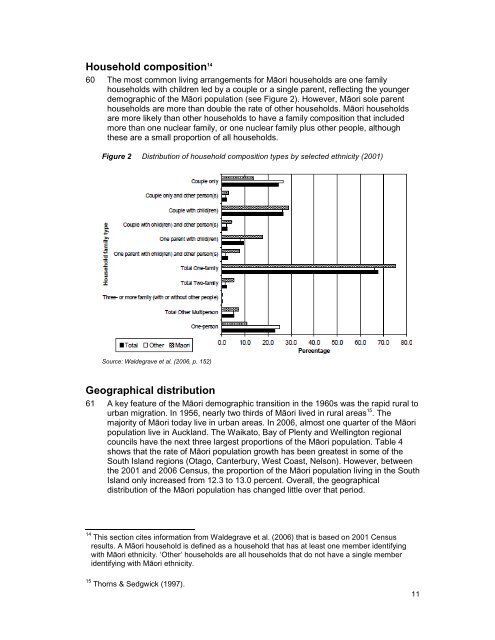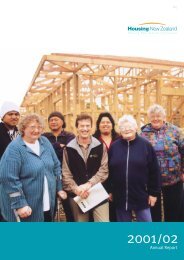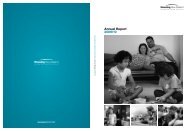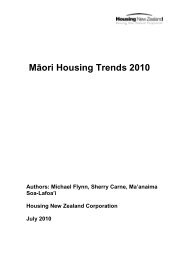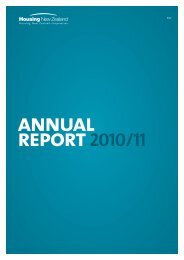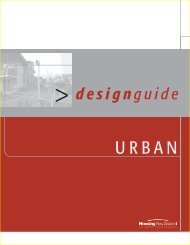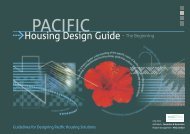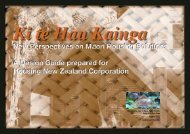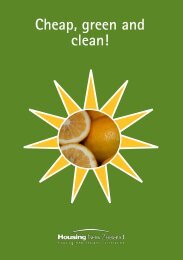MÄori Housing Trends 2009 - Housing New Zealand
MÄori Housing Trends 2009 - Housing New Zealand
MÄori Housing Trends 2009 - Housing New Zealand
You also want an ePaper? Increase the reach of your titles
YUMPU automatically turns print PDFs into web optimized ePapers that Google loves.
Household composition 1460 The most common living arrangements for Māori households are one familyhouseholds with children led by a couple or a single parent, reflecting the youngerdemographic of the Māori population (see Figure 2). However, Māori sole parenthouseholds are more than double the rate of other households. Māori householdsare more likely than other households to have a family composition that includedmore than one nuclear family, or one nuclear family plus other people, althoughthese are a small proportion of all households.Figure 2 Distribution of household composition types by selected ethnicity (2001)Source: Waldegrave et al. (2006, p. 152)Geographical distribution61 A key feature of the Māori demographic transition in the 1960s was the rapid rural tourban migration. In 1956, nearly two thirds of Māori lived in rural areas 15 . Themajority of Māori today live in urban areas. In 2006, almost one quarter of the Māoripopulation live in Auckland. The Waikato, Bay of Plenty and Wellington regionalcouncils have the next three largest proportions of the Māori population. Table 4shows that the rate of Māori population growth has been greatest in some of theSouth Island regions (Otago, Canterbury, West Coast, Nelson). However, betweenthe 2001 and 2006 Census, the proportion of the Māori population living in the SouthIsland only increased from 12.3 to 13.0 percent. Overall, the geographicaldistribution of the Māori population has changed little over that period.14 This section cites information from Waldegrave et al. (2006) that is based on 2001 Censusresults. A Māori household is defined as a household that has at least one member identifyingwith Māori ethnicity. ‘Other’ households are all households that do not have a single memberidentifying with Māori ethnicity.15 Thorns & Sedgwick (1997).11


